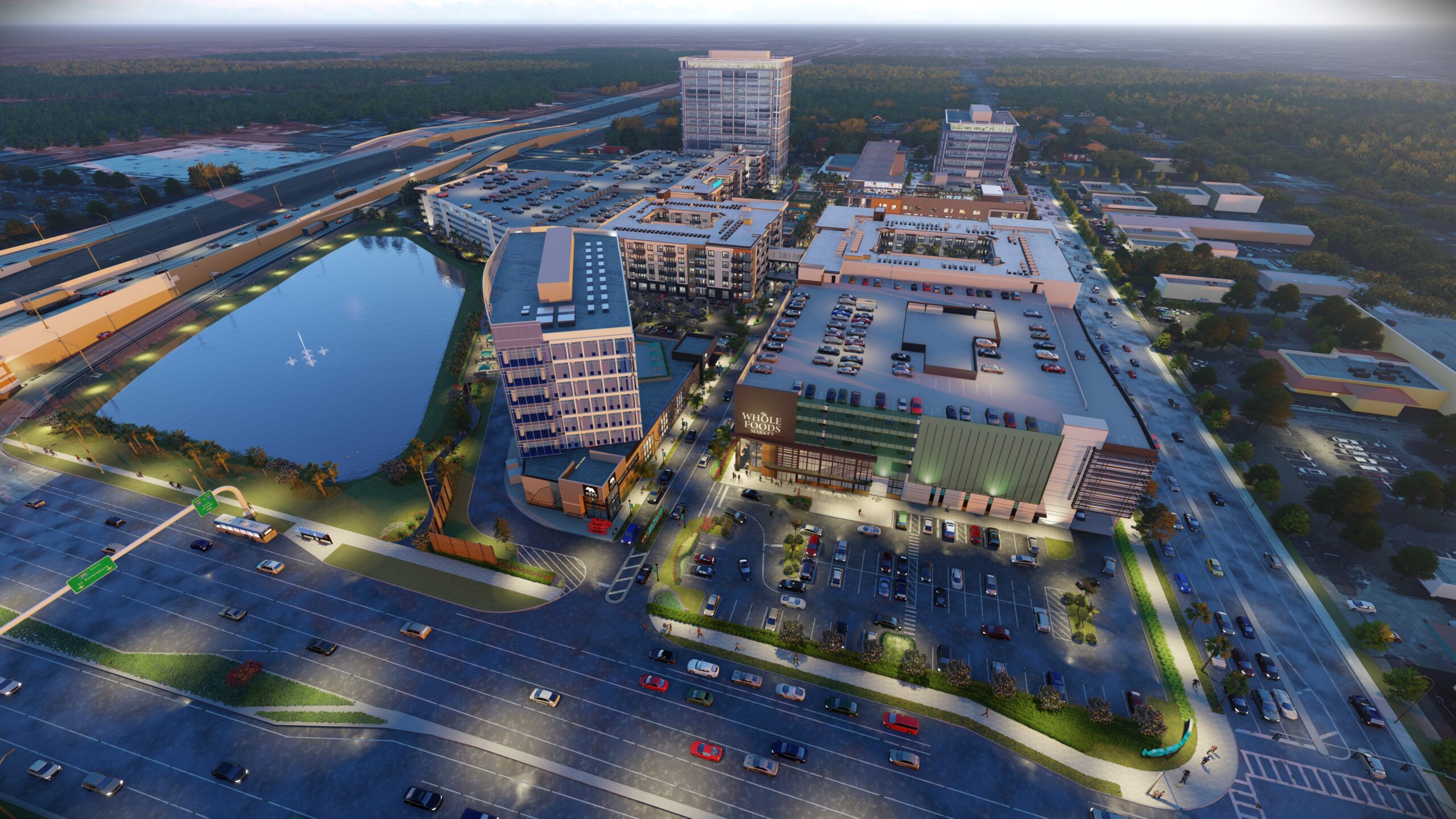The Bromley Cos. is nothing if not a deliberate developer.
New York-based Bromley stands ready to build Midtown Tampa, a $500 million mixed-used project slated for 22 acres on a prime location along North Dale Mabry Highway at Interstate 275 in Florida’s third-largest city.
The site is about a half mile from Raymond James Stadium, which will host Super Bowl LV in February 2021. The developer expects most of the project to be finished by then.
Midtown Tampa’s roots go back to 1997, when Bromley started acquiring the first of roughly three-dozen parcels in the area. The developer would spend years considering its options, one of which was a large office development serving the burgeoning Westshore district.
The financial crisis and Great Recession forced Bromley to shelve the plans in 2008. When the market recovered, Bromley bought even more land for the assemblage and ultimately saw an opportunity to go beyond offices and make a “generational investment” in Tampa Bay, according to Chief Executive Nicholas Haines.
“Unlike most developers, we take a very long-term view,” said Haines, pointing out that the firm hasn’t yet built on land it has owned in New York City for 35 years. “I’m excited we didn’t consummate the first development plan we had.”
While it’s rare for developers to hold onto sites for so long, it’s not unheard of, said Ken Johnson, a real estate professor at Florida Atlantic University in Boca Raton, Florida.
“The price of land is appreciating dramatically, so maybe they feel it made sense to wait for a future development option,” Johnson said.
Site work has now started on the planned 1.8 million-square-foot project that will include three office buildings, 390 apartments, 200,000 square feet of shops and restaurants and a 226-room hotel. The first announced retailer is grocery chain Whole Foods Market.
Crescent Communities is building the rental. Haines said Bromley will announce additional development partners in the months ahead.
The project will also include a walkable campus and an outdoor gathering spot for festivals, concerts and other community events.
Market observers say development on such a visible site is critical.
“For so long, Tampa has had two main business districts: Downtown and Westshore,” Craig Richard, CEO of the Tampa Hillsborough Economic Development Corp., said in a statement to CoStar News. “Midtown Tampa is perfectly positioned between the two, which will be transformative for Tampa because it will connect and extend our urban area together seamlessly.”
Other major projects in the pipeline across Tampa include Water Street Tampa and Heights Union. But the city still needs more developments that will attract companies and help persuade millennials to move to the area over Austin, Texas; Nashville, Tennessee; and other attractive communities, said Darron Kattan, managing director for the Franklin Street Real Estate Services brokerage in Tampa.
“This shows we’re progressing to that next step of cities,” Kattan said.
Midtown Tampa has three office development pads totaling 750,000 square feet. Haines said demand has been steady for the first building, the 150,000-square-foot Midtown One at 3725 W. Grace St. It will be built on speculation, without firm commitments from tenants, but Bromley is finalizing leases for about 40 percent of the space, Haines added.
Existing Tampa Bay companies as well as firms outside the region have shown interest, Haines said. Cushman & Wakefield is handling office leasing at the project.
Limited office construction in recent years dropped Westshore’s vacancy rate into the single digits for the first time in a decade, according to CoStar Market Analytics. The rate has increased slightly this year, but remains low at 10.1 percent. Meanwhile, downtown Tampa’s office vacancy rate of 7.9 percent is near a historic low, CoStar data shows.
The other two Midtown Tampa office buildings won’t be built until after the first one opens, but Bromley is talking to tenants about those buildings as well, Haines said.
Many real estate analysts expect a recession within a year or two, but Haines is confident Bromley can weather a downturn, citing its construction financing, an ideal location and the amount of preleasing so far.
Bromley, founded in 1972, has a Tampa office. It builds retail, office, industrial and student housing projects nationwide. Bromley’s investments in the Tampa Bay area have included an office building and a pallet recycling company, but Midtown Tampa will be its first ground-up development in the region, Haines said.
The Super Bowl gave Bromley a good goal to shoot for, according to Haines, who hopes to have Super Bowl LV parties in Midtown Tampa’s central plaza.
As part of the firm’s research, it traveled across the country for 18 months looking for ideas at other mixed-use projects. Even though it took 22 years, Haines said he’s glad Bromley was patient with the site.
“To do a quick fix, make a quick buck, was not our intent,” he said. “We wanted to wait to do something exceptional on it.”
